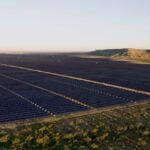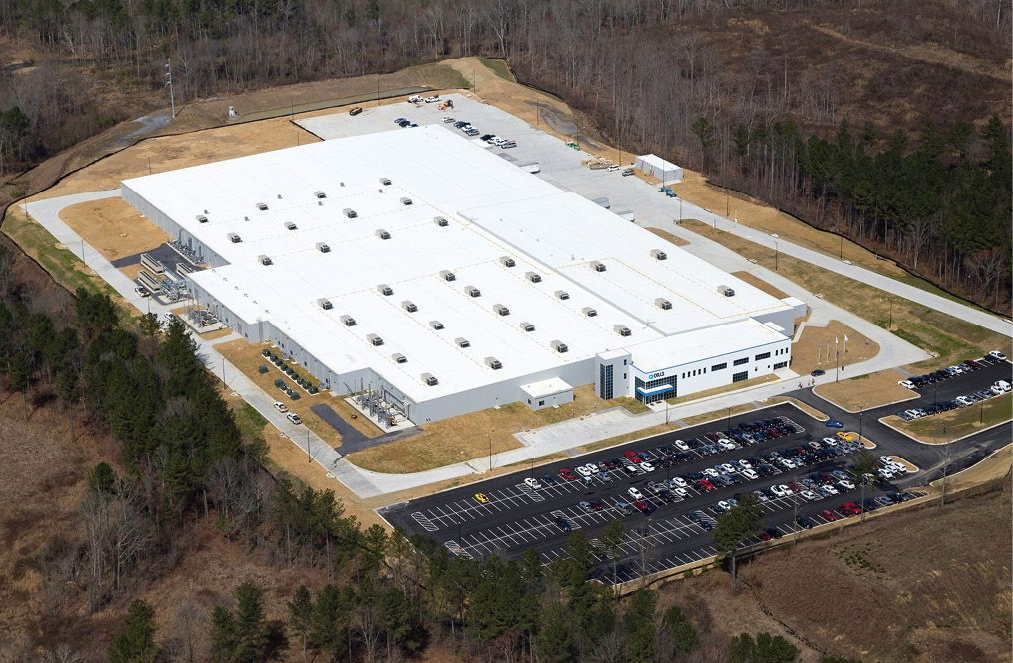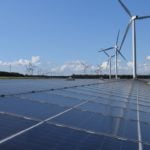Latest
Features , Interviews , Long Reads
Features , Interviews , Long Reads
Texas has nearly 7.5GW of storage capacity in operation, which Solargis suggested is a key reason for the resilience of the state’s electricity grids. Image: SB Energy.
Fluctuations in solar power generation and energy prices in the US during July’s heat dome highlight the need for more nuanced data in project management, and the importance of battery storage projects in balancing the grid.
This is according to data and software provider Solargis, which has published figures charting the impacts of the period in late July that saw temperatures in the north-east, south-east and Midwest exceed 37 degrees Celsius (100 degrees Farenheit).
This article requires Premium Subscription Basic (FREE) Subscription
Unlock unlimited access for 12 whole months of distinctive global analysis
Photovoltaics International is now included.
Already a subscriber? Sign In
Regular insight and analysis of the industry’s biggest developments
In-depth interviews with the industry’s leading figures
Unlimited digital access to the PV Tech Power journal catalogue
Unlimited digital access to the Photovoltaics International journal catalogue
Access to more than 1,000 technical papers
Discounts on Solar Media’s portfolio of events, in-person and virtual
Or continue reading this article for free
Already a subscriber? Sign In
Figures from the Northeast Regional Climate Center demonstrate the extremity of this anomaly in the north-east, noting that July 2025 was among the hottest months ever recorded for 28 of the 35 “major climate sites” in the region, with Hartford, Connecticut, and Albany, New York, reporting their hottest months since records began.
These extreme weather events can significantly affect the operation of a solar project. While much of the discussion in the US has focused on hailstorms – figures from kWh Analytics show that hail is responsible for over 70% of US solar projects’ financial losses – extremely high temperatures can also pose a threat, as they can lead to module temperature derating, reducing energy output.
Some of the fastest-growing solar sectors in the US are located in the east and Midwest, where the heat dome remained for several days. According to the Solar Energy Industries Association (SEIA), Florida, Illinois, Ohio, New York state and Indiana were all ranked in the top ten for new capacity additions in 2024, and by the end of 2024, both Florida and North Carolina were among the top five states for total cumulative operating capacity.
As a result, the extreme heat had a significant impact on power generation in these areas, affecting power prices and price forecasting for asset managers in these states. Solargis reports that, on 24 June, real-time power prices in the NYISO and MISO grids surged above US$2,000/MWh, more than quadruple the day-ahead prices.
“Traditional day-ahead generation forecast data based on basic solar irradiance and meteorological data are no longer sufficient on their own,” argued Giridaran Srinivasan, Solargis CEO for the Americas. His comments echo words from global Solargis CEO Marcel Suri, who has written for PV Tech in the past about the need to move away from day-ahead power price forecasting in order to improve the accuracy of power price assessments, as climate change increases the frequency of extreme weather events.
“What’s needed is a more integrated view that accounts for not just solar resource variability, but also ambient temperature fluctuations, aging asset performance and the historical patterns of market price volatility,” added Srinivasan.
Texas’ robust storage sector provides resilience
Solargis suggested that variations in power generation and price had a more significant impact on areas that are not “storage-rich regions”, where battery energy storage systems (BESS) can provide grid-balancing services and help mitigate the impacts of extreme weather.
For instance, Midwest state Illinois added the fourth-most solar capacity in 2024, but a report published by the Clean Grid Alliance last year found that the state could require 8.5-15GW of new BESS capacity to effectively manage an energy mix that is increasingly reliant on renewable power. The forecast does not take into account the impacts of extreme weather events, such as the July heat dome.
Solargis pointed to states with more robust storage sectors, such as Texas, as ones well-suited to endure these kinds of climactic disruptions to solar power generation. The company notes that Texas now has nearly 7.5GW of storage capacity in operation, and according to the 2025 Federal Summer Reliability Assessment, the ERCOT grid, which manages 90% of Texas’ electricity, had a risk of declaring an ‘energy emergency event’ of just 3%.
This figure is significantly down from the 15% risk seen in summer 2024, and suggests that more installed storage capacity can provide the flexibility necessary to mitigate the impact of disruptions to the power grid, such as overgeneration of electricity that can cause curtailment, or less generation than expected due to weather impeding the efficacy of solar modules.
San Francisco Bay Area, USA
PV Tech has been running an annual PV CellTech Conference since 2016. PV CellTech USA, on 7-8 October 2025 is our third PV CellTech conference dedicated to the U.S. manufacturing sector. The events in 2023 and 2024 were a sell out success and 2025 will once again gather the key stakeholders from PV manufacturing, equipment/materials, policy-making and strategy, capital equipment investment and all interested downstream channels and third-party entities. The goal is simple: to map out PV manufacturing in the U.S. out to 2030 and beyond.
Returning for its 12th edition, Solar and Storage Finance USA Summit remains the annual event where decision-makers at the forefront of solar and storage projects across the United States and capital converge. Featuring the most active solar and storage transactors, join us for a packed two-days of deal-making, learning and networking.
PV Tech has been running PV ModuleTech Conferences since 2017. PV ModuleTech USA, on 16-17 June 2026, will be our fifth PV ModulelTech conference dedicated to the U.S. utility scale solar sector. The event will gather the key stakeholders from solar developers, solar asset owners and investors, PV manufacturing, policy-making and and all interested downstream channels and third-party entities. The goal is simple: to map out the PV module supply channels to the U.S. out to 2027 and beyond.
Read Next
US solar PV recycling firm, Solarcycle, has produced a pilot module using 50% recycled glass from other decommissioned panels, which it says matches the performance of entirely new products.
DSD Renewables has raised US$238 million to bolster its portfolio of solar projects in 12 US states plus the District of Colombia.
Utility-scale solar is preparing for its next voltage evolution, with 2,000V systems emerging as the successor to the 1,500V standard.
The Q3 edition of our downstream solar PV journal, PV Tech Power, is now available to download.
Sustained private investment into UK solar is starting to produce results, at least with regard to the role of solar power in its energy mix.
US solar module manufacturer First Solar saw sales and net profits increase in Q2 2025, as it forecasts a strong performance under the Trump administration’s industrial and trade policy changes.
Subscribe to Newsletter
Most Read
Features , Interviews , Long Reads
Upcoming Events
Media Partners , Solar Media Events
https://www.pv-tech.org/solargis-us-heat-dome-better-solar-project-data-benefits-storage/





